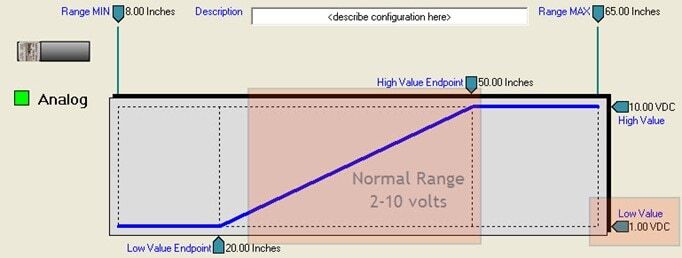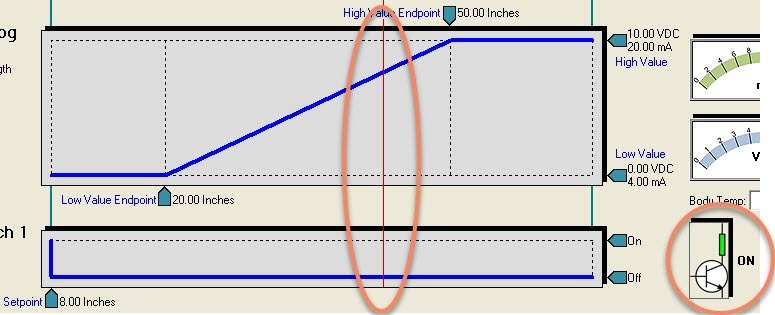Loss of Target Response

ToughSonic® ultrasonic sensors need an echo from an object or liquid surface to make measurements. When the echo is missing, the sensor responds according to its configuration.
Since ToughSonic sensors have multiple outputs, there are several types of response possible at a loss of target echo.
For analog current loop or voltage output (4-20mA or 0-10v), the response choices include one of the following:
1. Goes to the HIGHEST level
2. Goes to the LOWEST level
3. Holds the LAST level
For switches, the response choices include the following:
1. Force the switch to ON
2. Force the switch to OFF
3. No reaction
For Modbus polled data or ASCII streaming output, a distance measurement of 00000 signifies no echo was received. A time delay can be used before the analog or switch reaction occurs.
ToughSonic general purpose sensors have a status LED that is GREEN or RED any time the sensor is powered. GREEN means an echo was received on the last cycle. RED means no echo was received.
The output levels or switch states are maintained in the response position for as long as the echo loss persists. That steady output might be missed or not interpreted as a no-echo response.
A switch that controls a valve or motor might activate incorrectly when the echo is lost. A way to monitor the presence or absence of target echo is recommended in this case.
Senix ultrasonic sensors have multiple outputs, so they offer three possible methods:
1. Set the analog range endpoints wider than the expected measurement range, and respond with a maximum or minimum value when loss of echo occurs (after an optional delay)
2. Set one switch to monitor over the whole operating range and configure it to react only to a loss of target echo (after an optional delay)
3. Respond to a digital counts value of zero as a loss of target echo
For Method #1, if the analog output may only reach a range of 6-18mA normally, we recommend setting the “Loss of Target” response from to 4-20mA.
A PLC would be set to interpret that as a missing echo situation.
Here's an example. The analog response to loss of echo is configured to go to the low value after five seconds of no echo. The low value is outside of the normal analog range used.

In Method #2, if the full 0-10v or 4-20mA range is needed, a switch is configured to respond only to a “Loss of Target” event. This is a handy feature to use while also taking analog 4-20mA or 0-10v from the sensor.
Configure it to either go to ON or OFF as appropriate upon a loss of target. The user knows the echo status independent of the other outputs, and he can use the switch to light an indicator.
Here is an example of Method #2. The full analog range is needed. The analog loss of echo response is to hold the last value, and a switch monitoring the echo goes ON after 10 seconds of no echo. This can be used to control an alert light.
The analog held the last value when echo was lost, while Switch #1 went active at loss.

Have more questions? Contact Senix Support today!
